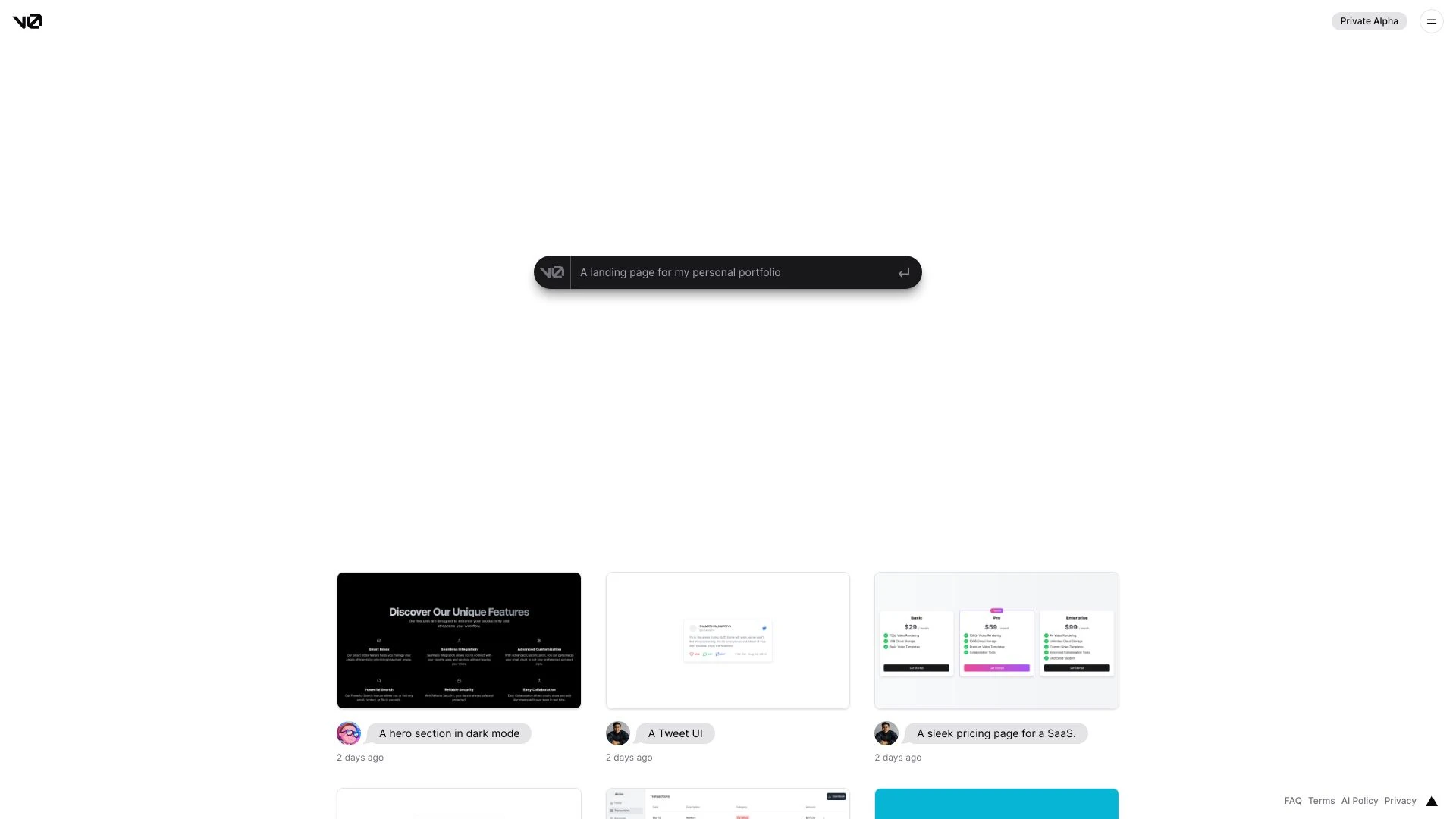v0.dev versus CodalityUI
v0.dev, launched in 2021, focuses on developing serverless applications with a user-friendly interface for developers. CodalityUI, established in 2020, targets designers and developers seeking to enhance UI/UX workflows. Both platforms prioritize rapid prototyping but cater to distinct audiences: v0.dev for backend developers and CodalityUI for front-end designers.


v0.dev
Ideal For
Creating report issue modals
Generating user profiles
Designing chat applications
Building blog templates
Key Strengths
Enhances design productivity
Simplifies UI generation
Reduces coding complexity
Core Features
AI-powered React code generation
Simple text prompt interface
Copy-and-paste code friendly
Versatile UI element creation
Streamlined workflow
CodalityUI
Ideal For
Quickly create buttons, forms, and UI elements from text
Enable faster web development processes
Generate HTML/CSS for prototypes or mockups
Simplify the workflow for designers looking for instant outputs
Key Strengths
Instantly generates design elements from text
Saves time and enhances productivity
User-friendly interface for all skill levels
Core Features
AI-driven live rendering of HTML/CSS components
Real-time design generation
User-friendly prompt input
Supports unlimited elements in higher plans
Provides advanced features and priority support
Popularity
At a Glance
v0.dev offers a more streamlined, code-centric platform ideal for developer-focused projects, enabling quick prototyping and API integrations. In contrast, CodalityUI emphasizes UI design with robust components tailored for seamless application development. Pros of v0.dev include flexibility and rapid development; its cons include a steeper learning curve. CodalityUI's strength lies in its user-friendly interface, while its downside is less coding flexibility. Recommend v0.dev for backend-heavy projects and CodalityUI for frontend design needs.
Pricing and Subscription Plans
v0.dev offers a tiered pricing structure starting with a free plan for individual users, while their Pro plan is priced at $29 per month for teams. Additional features incur fees. CodalityUI provides a similar free tier, with paid plans starting at $19 monthly per user for small teams. Both platforms cater effectively to startups and SMEs, with CodalityUI being slightly more affordable for small groups, while v0.dev suits growing teams needing enhanced collaboration tools.
Performance Metrics
v0.dev shows superior speed in processing large datasets, often outperforming CodalityUI in time-to-completion metrics. However, CodalityUI excels in accuracy, particularly in complex data interpretations. Reliability benchmarks reveal both tools showcase high uptime, yet v0.dev is more consistent in high-load scenarios, while CodalityUI shines in precision-driven tasks.
User Experience
v0.dev features a sleek, modern interface that prioritizes usability, offering intuitive navigation and customizable layouts, which enhance personalized workflows. CodalityUI, while visually appealing, has a steeper learning curve due to its complex functionalities, potentially hindering quick adaptation. User support for v0.dev is robust with a detailed knowledge base, while CodalityUI offers basic resources, making v0.dev more user-friendly overall.
Integrations and Compatibility
v0.dev integrates seamlessly with tools like GitHub, Jira, and Slack, enhancing existing workflows. CodalityUI supports integrations with platforms such as Google Workspace and Zapier, allowing flexibility. Both prioritize compatibility with major systems, but v0.dev offers broader app support.
Limitations and Drawbacks
v0.dev may struggle with scalability and integration flexibility, while CodalityUI can face performance issues and limited customization. Workarounds include optimizing code for efficiency and utilizing third-party tools for enhanced integrations and customization.